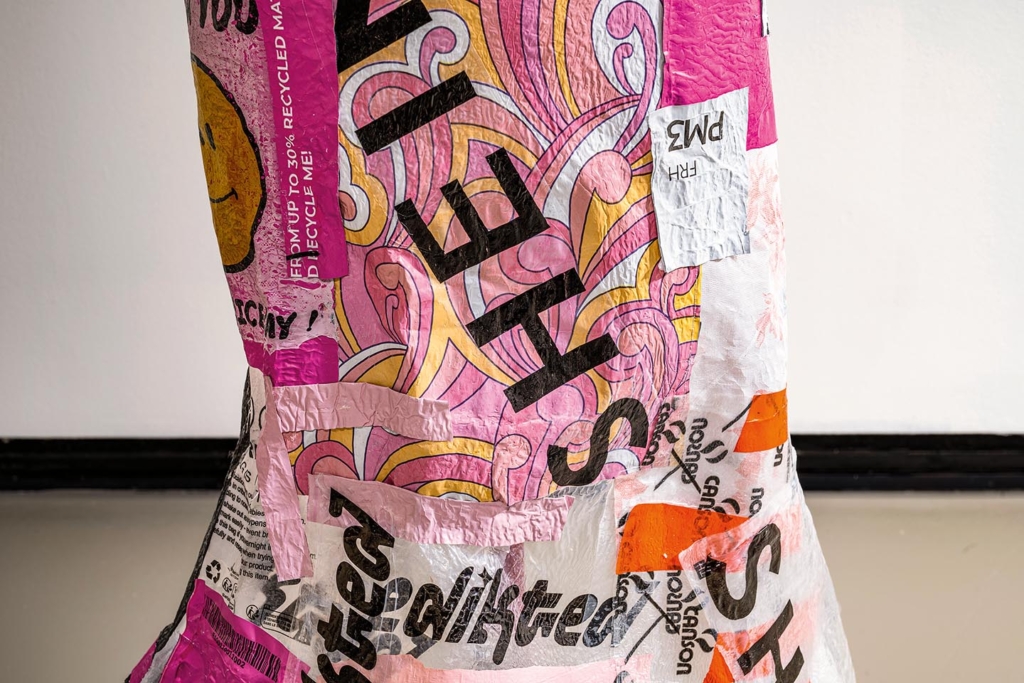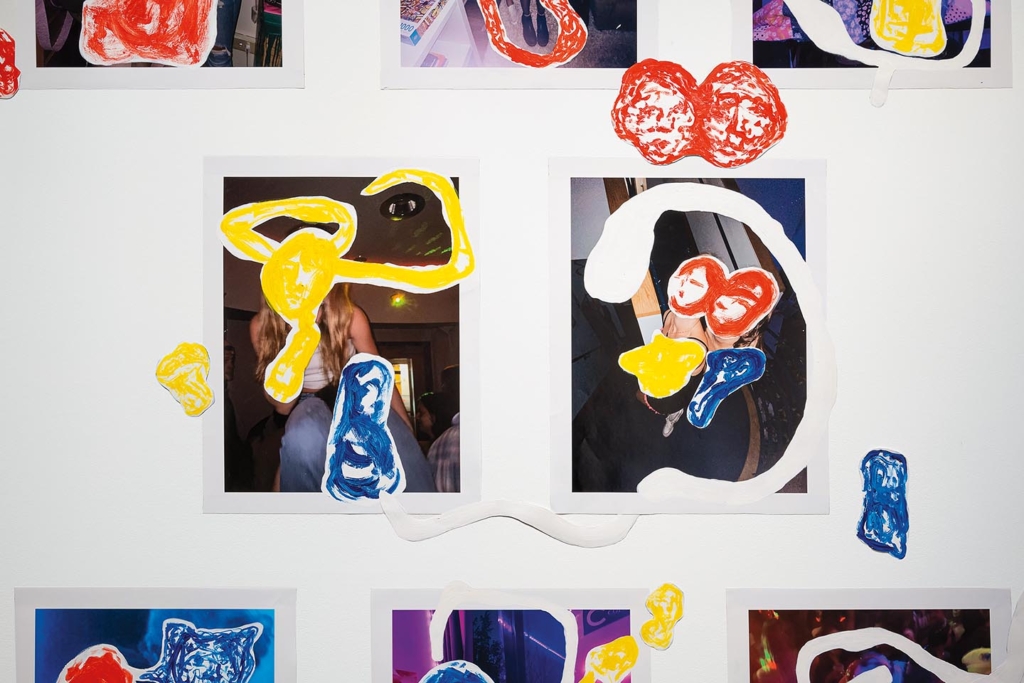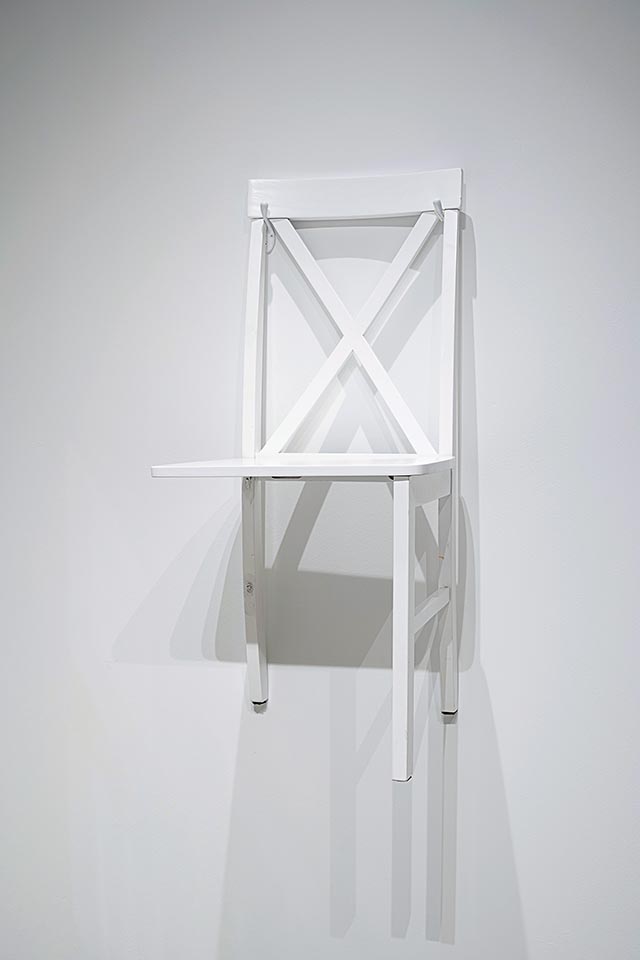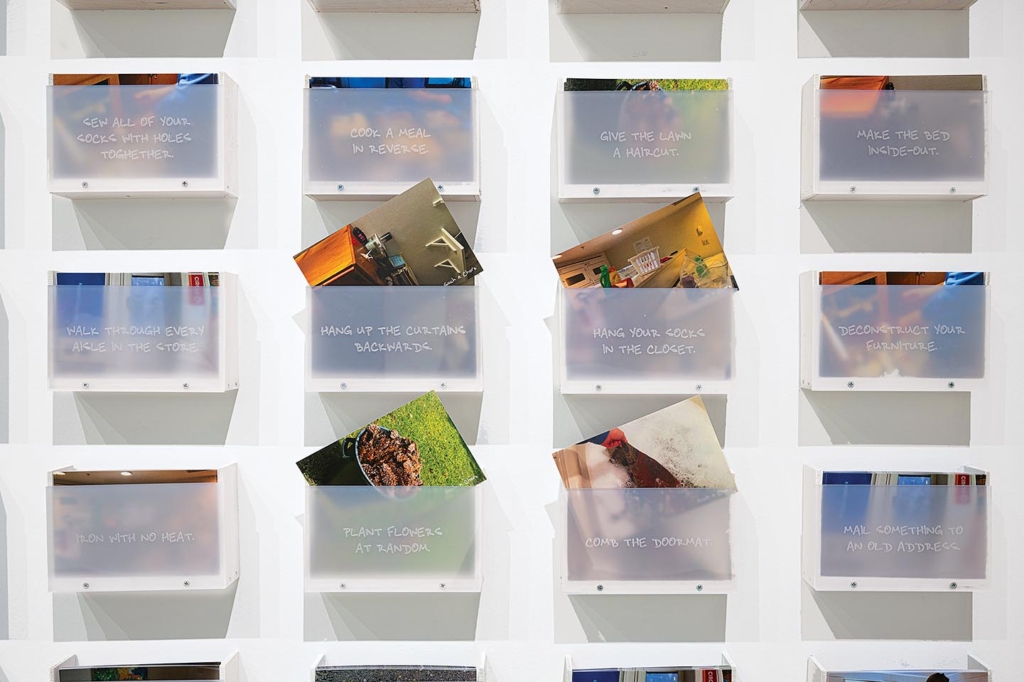What do you get when you combine majors in studio art and environmental geology?
A tree in the Clifford Gallery.
A studio art project by Riley Farbstein ’24 comes in two parts, just like her major programs in studio art and environmental geology. The first piece, made of discarded fast-fashion mailers sewn together, resembles a dress. The second piece is, well, alive — it’s a small apple tree supported by its own “dress,” made of cardboard and emerging vines.

Farbstein’s project was displayed among those of other senior art students in the exhibition Pushback — a series of vivid, cumulative pieces. With her specialized knowledge in eco-art, Professor Margaretha Haughwout served as her mentor.
“I’m a multimedia artist, so I wanted my final project to combine the topics of environmental consciousness, art, and fashion,” says Farbstein.
Thus, her two-part project came to life — in the first, A Repurposed Fashion Studio, this happened in a literal way.
“I made a dress-shaped ecosystem for a tree to offer a means of protection,” Farbstein explains. “I wanted to critique fashion as a sort of armor or something that only humans have.”
Farbstein’s tree is supported by a base of recycled cardboard in tiers that resemble a dress. A strip of grow lights installed by the Clifford Gallery staff keeps underlying vines and mushrooms alive, as they grow to shape the style from holes and propagation tubes in the base. Farbstein asserts this piece in contrast to its neighbor, Fast Fashion, her mailer-made dress. As vines envelop the base of her tree-project, Farbstein’s Fast Fashion dress remains unchanged.
“Placing my pieces next to each other conveys a message: the duality of artificial and disposable fast fashion versus more sustainable, conscious protections for our planet,” says Farbstein. “The fast-fashion industry generates so much plastic that just gets thrown away, and a lot of people do the same thing with clothes.”
To make the plastic dress, Farbstein mimicked the mass-produced styles sold by fast-fashion retailers — she sewed their mailers into a wearable garment, which she displayed on a mannequin.
“By repurposing plastic bags as fabric and assembling a flashy gown, I ask that observers reconsider how their plastic waste can be reutilized,” says Farbstein.
And although her art critiques mass purchasing from fast-fashion websites, she contends that these purchases need not be the end of the cycle.
“By cherishing waste as a precious material, garbage could be reutilized and explored as a source of material,” she says.
Other senior art projects include
Emma Barrison’s Three Steps to Forget a Memory You Never Wanted to Make overlays personal photographs with colorful brushstrokes to reconstruct painful memories.

Thomas Cernosia’s One and Chairs juxtaposes AI-generated images with his illustrations to argue for the necessity of handmade images in today’s digital landscape.

Jordan Hurt’s Such a Chore social experiment features take-home postcards with playful instructions for mundane tasks (e.g., “Disorganize the silverware!”) to evoke joy and spontaneity in the viewer.


